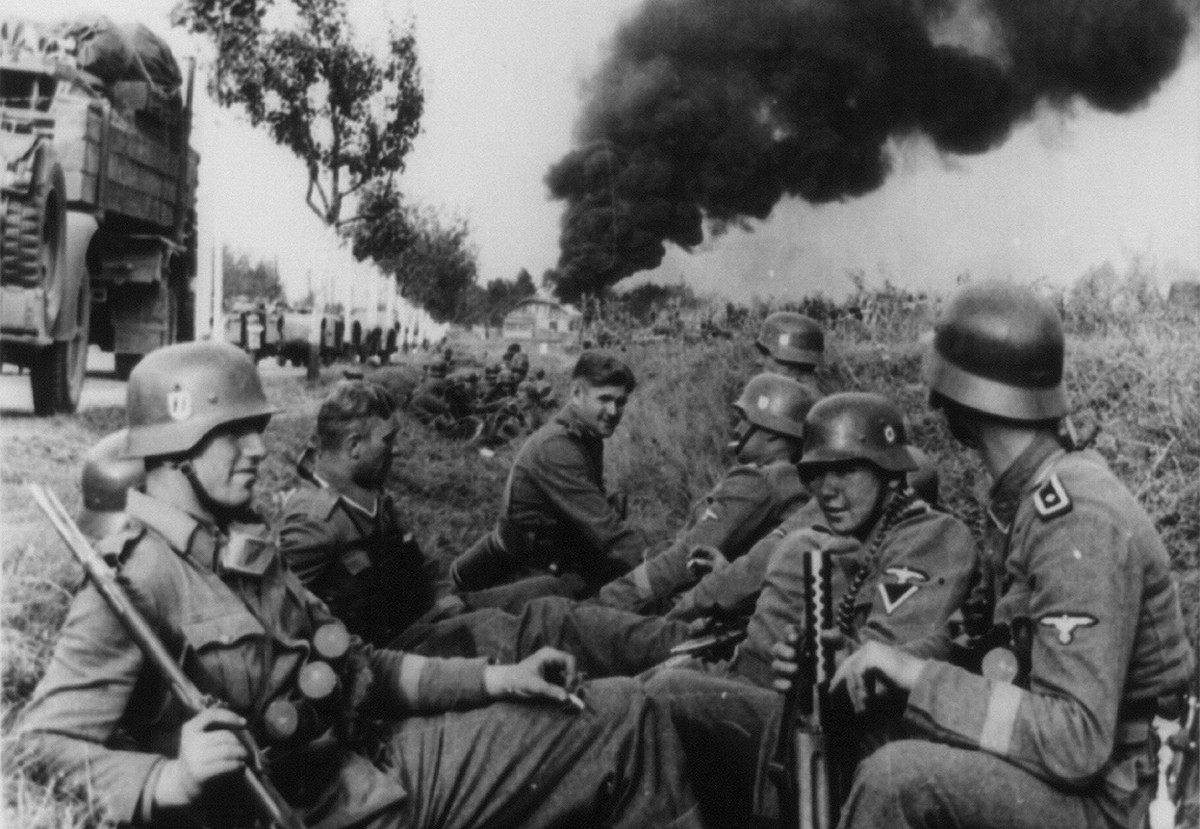Ve výčtu chybí okupace Těšinska a Oravy polskými vojsky
1.9. 1939 The Second World War began
Categories: Second World War , Calendar

When Germany invaded Poland on September 1, 1939, the French government declared a general mobilization in accordance with the Allied agreement and prepared for war. The borders with Germany were closed and the evacuation of the civilian population from the border areas began.
After the occupation of Austria in March 1938 and the subsequent occupation of the Czechoslovak areas on the borders with Germany and Austria, inhabited mainly by German-speaking people, tensions were high in Europe. In connection with both these events, French fortress units were temporarily mobilised and fortifications were put on standby. During the first half of 1939, tensions escalated. In March 1939, Germany occupied the rest of Bohemia and Moravia. That is, the territories that Germany had to give up after World War I.
By August it was clear that, having seen what had happened in Czechoslovakia, the Poles would fight rather than retreat. War between Germany and Poland seemed inevitable. The Germans had taken the western part of Poland, the Soviets the east. "It is not without interest that the Slovaks, who at that time had their own independent state, which was Hitler's ally, went alongside the German army to invade Poland. And the Poles suffered not only from the loss of territory. Both the Germans and the Soviets murdered civilians on a large scale during the invasion and subsequent occupation," writes Zdeněk Ležák in his book The Velvet Revolution.
It was clear to Poland's allies France and Britain that they would be drawn into the conflict. Poland had an alliance treaty with both countries. These countries pledged that if Germany attacked Poland, they would immediately declare war on it. "As early as August 21, France began mobilizing the Maginot Line and forces to form the first line of defense along the border," writes William Allcorn in The Maginot Line 1928-45.
This process took place over several days, during which time the garrisons moved from the peace barracks to the fortress buildings to prepare for battle. Establishment portions of the fortress units were called to active duty and arrangements were made to protect the border against surprise attack. When Germany invaded Poland at 5.45 a.m. on 1 September 1939, the French government, in accordance with the Allied agreement, declared a general mobilization and prepared for war. "The borders with Germany were closed and the evacuation of the civilian population from the border areas began," Allcorn writes.
Great Britain also declared a mobilization and began preparing to move a large part of its army to France. Polish resistance was broken and Poland occupied within weeks, while not much happened in the west. The British-French mobilization was slow, and the Allied strategy was primarily defensive in nature anyway, relying mainly on blockade, economic sanctions and fortifications to weaken Germany and lay the foundations for a possible future offensive.
Sources:
William Allcorn, The Maginot Line 1928-45
Zdeněk Ležák, The Velvet Revolution
www.theatlantic.com
The article is included in categories:
Post
"V průběhu první poloviny roku 1939 se napětí stupňovalo. V březnu 1939 obsadilo Německo zbytek Čech i Moravy. Tedy území, kterých se muselo Německo vzdát po první světové válce.°"
Tak se mi zdá, že tyto stránky se přeorientovávají na žánr sci-fi. Čistě náhodou všechny učebnice historie naše uzemí před první světovou válkou udávají jako součást Rakousko- Uherska. Zvlástě to co bylo územím RČS po mnichovském diktátu.



